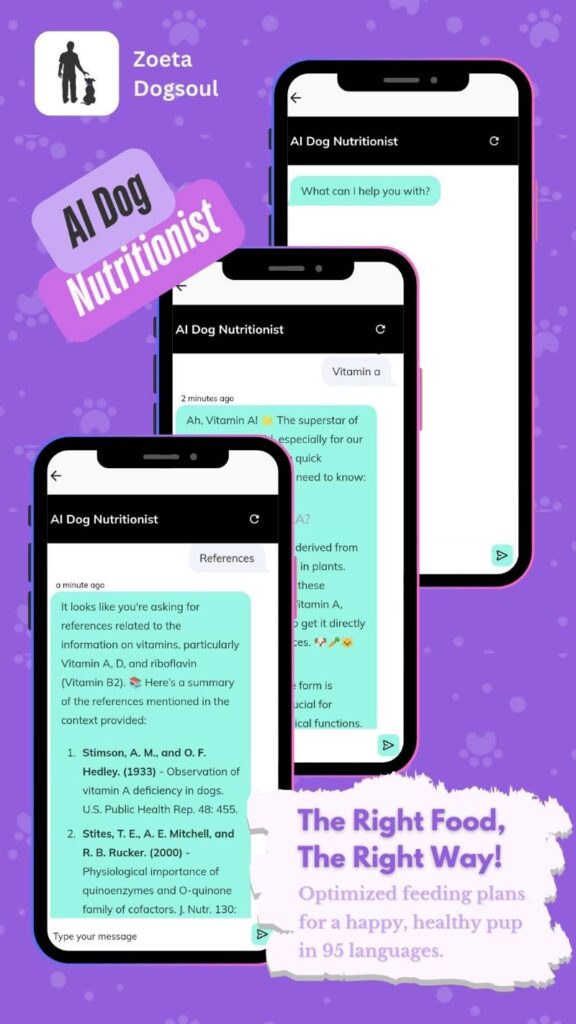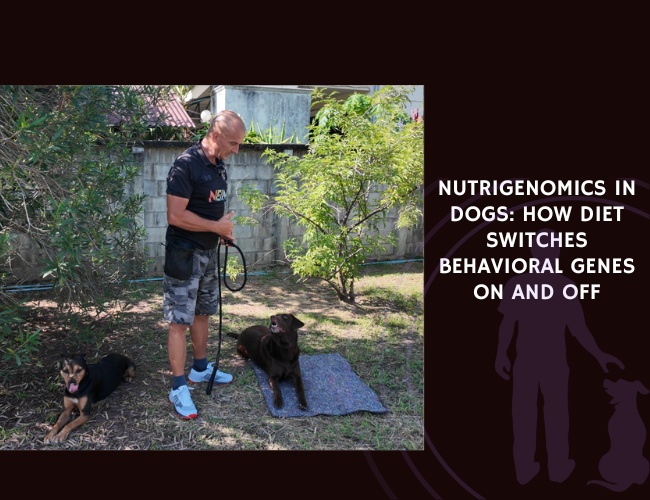Introduction
Your Boxer’s boundless energy and muscular physique tell a story of careful breeding and specific nutritional needs that set them apart from other breeds. These remarkable dogs, with their distinctive square muzzles and expressive eyes, require more than just a bowl of kibble to thrive – they need a carefully balanced diet that supports their unique metabolism, addresses their breed-specific sensitivities, and fuels their athletic lifestyle.
Did you know that Boxers have one of the highest metabolic rates among large-breed dogs during their growth phase? This fascinating trait, combined with their predisposition to certain digestive sensitivities, makes understanding their nutritional needs essential for any devoted Boxer parent. Whether you’re welcoming a bouncy Boxer puppy into your home or caring for a distinguished senior, getting their nutrition right can mean the difference between a dog that merely survives and one that truly thrives.
Let us guide you through the complex world of Boxer nutrition, where science meets practical application, and where every meal becomes an opportunity to support your furry friend’s health and happiness. From understanding their unique digestive traits to preventing life-threatening conditions like bloat, this comprehensive guide will equip you with the knowledge to make informed decisions about your Boxer’s diet throughout every stage of their life. 🐾
Breed-Specific Metabolism & Digestive Traits
Understanding Your Boxer’s Metabolic Engine
Your Boxer’s metabolism operates like a finely tuned engine, requiring specific fuel to maintain optimal performance. During their growth phase, these athletic dogs exhibit a remarkably high metabolic rate that demands higher energy intake compared to many other breeds. This elevated metabolism gradually decreases as your Boxer matures, following patterns similar to other large-breed dogs but with some unique Boxer-specific considerations.
Metabolic Characteristics in Boxers:
- Growth Phase Metabolism: Significantly elevated energy requirements during puppyhood
- Sex Differences: Male Boxers may have higher basal metabolic rates than females
- Age-Related Changes: Gradual decrease in metabolic rate as your Boxer ages
- Activity-Based Variations: Working or highly active Boxers maintain higher metabolic demands
You might notice your young Boxer seems to be constantly hungry despite regular meals – this isn’t unusual given their metabolic demands. However, this high metabolism must be carefully managed to prevent rapid growth that could stress developing joints and bones.
Digestive System Sensitivities
Boxers possess what many veterinary nutritionists consider a “sensitive stomach,” making digestive health a primary concern throughout their lives. This sensitivity manifests in various ways and requires careful attention to diet composition and feeding practices.
Common Digestive Indicators in Boxers:
- Softer stools compared to other breeds
- Increased fecal moisture content
- Potential intolerance to certain protein sources
- Variable responses to different carbohydrate sources
Your Boxer’s digestive efficiency can vary significantly based on individual genetics and environmental factors. Some Boxers process food with remarkable efficiency, while others struggle with even minor dietary changes. This variability means that what works perfectly for one Boxer might cause digestive upset in another.
The Bloat Factor: A Critical Consideration
Perhaps no digestive issue concerns Boxer owners more than gastric dilatation-volvulus (GDV), commonly known as bloat. This life-threatening condition occurs when the stomach fills with gas and potentially rotates, cutting off blood supply and requiring immediate emergency intervention.
Bloat Prevention Through Digestive Management:
- Meal Frequency: Multiple small meals reduce stomach distension
- Eating Speed: Slow-feeder bowls prevent rapid food consumption
- Post-Meal Activity: Restricted exercise for one hour after eating
- Food Consistency: Avoiding sudden dietary changes that might increase gas production
Understanding your Boxer’s predisposition to bloat influences every aspect of their nutritional management, from choosing appropriate kibble size to establishing feeding routines that minimize risk while maintaining nutritional adequacy.
Macronutrient Requirements
Protein: Building and Maintaining Your Boxer’s Powerful Physique
Protein serves as the foundation of your Boxer’s diet, supporting everything from muscle development to immune function. The optimal protein level varies significantly based on your dog’s life stage and activity level, requiring careful adjustment as your Boxer grows and ages.
Life Stage Protein Requirements:
- Puppy Boxers (0-18 months): 22-26% of dry matter
- Adult Boxers (18 months-7 years): 18-22% of dry matter
- Senior Boxers (7+ years): 16-18% of dry matter (unless kidney issues indicate otherwise)
- Working/Athletic Boxers: May require the higher end of adult ranges
High-quality protein sources make a significant difference in your Boxer’s health. Chicken, lamb, and fish proteins typically offer superior digestibility compared to plant-based proteins, though individual sensitivities may require exploring alternative protein sources. You might notice improved coat quality, better muscle tone, and increased energy when your Boxer receives optimal protein nutrition.
Fat: Essential Energy and Wellness Support
Fat provides more than just calories for your energetic Boxer – it supplies essential fatty acids crucial for skin health, cognitive function, and inflammatory response regulation. The ideal fat content balances energy provision with weight management concerns.
Optimal Fat Levels by Life Stage:
- Growing Puppies: 15-20% to support rapid development
- Active Adults: 15-20% for sustained energy
- Senior or Less Active: 12-15% to prevent weight gain
The omega-3 to omega-6 fatty acid ratio deserves special attention in Boxer nutrition. An ideal ratio approaching 1:1 or 1:2 supports optimal skin and coat health while providing anti-inflammatory benefits particularly important for this active breed.

Carbohydrates: The Controversial Component
While dogs don’t have a specific carbohydrate requirement, these nutrients play important roles in your Boxer’s diet when properly selected and balanced. Highly digestible carbohydrate sources help minimize the digestive upset common in sensitive Boxers.
Carbohydrate Considerations for Boxers:
- Recommended Range: 20-30% of diet composition
- Preferred Sources: Rice, sweet potatoes, and oats for digestibility
- Glycemic Index: Lower glycemic options help maintain stable energy
- Fiber Content: 3-5% supports digestive health without causing upset
Your Boxer’s individual response to carbohydrates may vary significantly. Some thrive on moderate carbohydrate inclusion, while others show improved energy and digestion on lower-carbohydrate formulations. 🧡
Micronutrient Profile
Vitamins: Supporting Complex Body Systems
Your Boxer’s vitamin requirements extend beyond basic survival to support their active lifestyle and breed-specific health concerns. Each vitamin plays specific roles in maintaining your dog’s health, with some holding particular importance for Boxers.
Critical Vitamins for Boxer Health:
- Vitamin A: Supports vision and immune function
- Vitamin D: Essential for calcium absorption and bone health
- Vitamin E: Powerful antioxidant potentially beneficial given Boxers’ cancer predisposition
- B-Complex Vitamins: Support energy metabolism and neurological function
The antioxidant properties of vitamins E and C deserve special consideration for Boxers. Given their elevated risk for certain cancers, providing adequate antioxidant support through diet may offer protective benefits, though research remains ongoing.
Minerals: The Foundation of Structural Health
Mineral balance proves particularly crucial for growing Boxers, where improper calcium and phosphorus ratios can contribute to developmental orthopedic diseases. Adult and senior Boxers also require careful mineral balance to support ongoing health.
Essential Mineral Considerations:
- Calcium and Phosphorus: Must maintain proper ratio (ideally 1.2:1)
- Zinc: Supports immune function and skin health
- Selenium: Works with vitamin E as an antioxidant
- Iron: Essential for oxygen transport in active dogs
Your veterinarian might recommend periodic blood work to assess mineral status, particularly if your Boxer shows signs of deficiency such as poor coat quality, lethargy, or recurring infections.
Trace Elements: Small Amounts, Big Impact
While required in tiny amounts, trace elements play crucial roles in your Boxer’s health. Though specific Boxer-related imbalances aren’t well-documented in current research, maintaining appropriate trace element levels supports overall wellness.
Regular commercial diets typically provide adequate trace elements, but home-cooked diets require careful supplementation to prevent deficiencies. Working with a veterinary nutritionist ensures proper balance when preparing homemade meals.
Common Food Sensitivities & Intolerances
Identifying Your Boxer’s Trigger Foods
Food sensitivities plague many Boxers, manifesting through various symptoms that can significantly impact quality of life. Understanding common triggers helps you identify and eliminate problematic ingredients from your dog’s diet.
Frequent Allergen Culprits in Boxers:
- Proteins: Beef, dairy, and chicken top the list
- Grains: Wheat, corn, and soy commonly trigger reactions
- Additives: Artificial colors, flavors, and preservatives
You might notice your Boxer developing symptoms gradually – that persistent ear infection or recurring hot spot might actually stem from food sensitivity rather than environmental factors. Keeping a food diary helps identify patterns between dietary changes and symptom flare-ups.
Manifestations of Food Sensitivities
Food sensitivities in Boxers rarely present as simple digestive upset. Instead, they often manifest through seemingly unrelated symptoms that can puzzle even experienced owners.
Common Sensitivity Symptoms:
- Skin Issues: Persistent itching, redness, or hair loss
- Ear Problems: Recurring infections or excessive wax production
- Gastrointestinal Signs: Chronic soft stools or vomiting
- Behavioral Changes: Increased irritability or lethargy
The connection between diet and these symptoms isn’t always obvious. That chronic ear infection that never quite resolves despite treatment? It might be your Boxer’s immune system responding to a dietary trigger.
Implementing an Elimination Diet
When food sensitivities are suspected, an elimination diet provides the gold standard for identifying triggers. This systematic approach requires patience but yields valuable information about your Boxer’s dietary needs.
The process involves feeding a novel protein and carbohydrate source for 8-12 weeks, then gradually reintroducing potential triggers while monitoring for symptom return. Your veterinarian can guide this process, ensuring nutritional adequacy while identifying problematic ingredients.
Fuel. Focus. Form.
Built for motion.
Your Boxer’s body isn’t just muscular—it’s metabolic. With one of the fastest growth-phase metabolisms among large breeds, these dogs burn energy like a furnace. That’s why the right fuel matters. From puppyhood to senior years, each life stage demands precise macronutrient balance. Protein powers their physique. Fat sharpens their focus. And carefully chosen carbs steady their pace.
Sensitive inside.
Behind their tough exterior lies a gut that demands care. Boxers are prone to food sensitivities, digestive upset, and serious risks like bloat. Identifying triggers—like common allergens or rapid eating—can prevent years of discomfort. It’s not just about feeding—it’s about listening to what their body tells you after every meal.



Every bite counts.
Nutrition isn’t just science—it’s strategy. Slow-feeders to curb bloat, antioxidant-rich diets to fight disease, and joint-friendly formulas to protect mobility are not luxuries—they’re essentials. Whether you’re choosing kibble, cooking from scratch, or navigating food-related behavior, your Boxer needs more than calories—they need commitment.
Life Stage Adjustments
Puppy Nutrition: Fueling Proper Growth
Your Boxer puppy’s nutritional needs differ dramatically from adult requirements, demanding careful attention to support proper development without encouraging excessive growth that could stress developing joints.
Puppy-Specific Nutritional Priorities:
- Controlled Calcium Levels: Prevents developmental orthopedic disease
- Higher Protein Content: Supports muscle development
- Increased Caloric Density: Meets high energy demands
- Multiple Daily Feedings: 3-4 meals prevent hypoglycemia and bloat
The first 18 months of your Boxer’s life set the foundation for lifelong health. Overfeeding during this period, even with the best intentions, can lead to rapid growth that predisposes your puppy to hip dysplasia and other joint problems.
Adult Maintenance: Sustaining Peak Health
Adult Boxers require balanced nutrition that maintains muscle mass, supports activity levels, and prevents obesity. This life stage often represents the longest period of your dog’s life, making consistent, appropriate nutrition crucial.
Adult Boxer Feeding Strategies:
- Consistent Meal Times: Twice daily feeding at regular intervals
- Portion Control: Adjusted based on activity level and body condition
- Seasonal Adjustments: Increased calories during cold weather or high activity
- Treat Management: Limiting treats to less than 10% of daily calories
You might notice your adult Boxer’s appetite fluctuating with activity levels or seasonal changes. This normal variation requires flexible portion adjustment while maintaining consistent meal timing.
Senior Support: Adapting to Aging Needs
As your Boxer enters their golden years, typically around age seven, their nutritional needs shift to support aging body systems while preventing age-related diseases.
Senior-Specific Modifications:
- Moderate Protein Reduction: Unless contraindicated by health status
- Enhanced Joint Support: Glucosamine and chondroitin supplementation
- Increased Fiber: Supports digestive health and weight management
- Cognitive Support: Antioxidants and omega-3 fatty acids
Senior Boxers often maintain hearty appetites despite decreased activity, requiring careful portion control to prevent obesity that could exacerbate joint problems or cardiac issues. 🐾

Breed-Specific Health Risks with Nutritional Relevance
Hip Dysplasia: A Nutritional Prevention Approach
Hip dysplasia affects many Boxers, but proper nutrition during growth significantly impacts disease development and severity. Your approach to feeding during puppyhood can influence your Boxer’s joint health throughout life.
Nutritional Strategies for Hip Health:
- Controlled Growth Rate: Prevents excessive stress on developing joints
- Appropriate Calcium/Phosphorus Ratio: Supports proper bone development
- Lean Body Condition: Reduces mechanical stress on joints
- Anti-inflammatory Support: Omega-3 fatty acids may reduce inflammation
Maintaining your Boxer at an ideal body weight throughout life remains one of the most effective strategies for managing hip dysplasia risk and progression.
Bloat Prevention Through Dietary Management
Given the life-threatening nature of bloat in Boxers, nutritional management plays a crucial preventive role. Every feeding decision should consider bloat risk reduction.
Evidence-Based Bloat Prevention:
- Food Form: Large kibble pieces encourage chewing and slow consumption
- Fat Content: Avoiding high-fat foods that delay gastric emptying
- Meal Size: Multiple small meals reduce stomach distension
- Food Additives: Probiotics may support healthy digestion
Creating a calm feeding environment also matters – stress during meals can increase air swallowing and bloat risk.
Pancreatitis Risk Management
Boxers’ enthusiasm for food can lead to dietary indiscretion, potentially triggering pancreatitis. Maintaining appropriate fat levels and preventing access to fatty human foods protects against this painful condition.
Balanced nutrition with moderate fat content (15-18% for adults) provides energy without overwhelming the pancreas. During holidays or gatherings, extra vigilance prevents your Boxer from accessing fatty table scraps that could trigger an episode.
Dilated Cardiomyopathy Considerations
Recent research suggests potential links between diet and dilated cardiomyopathy (DCM) in dogs, though specific Boxer connections remain under investigation. Current evidence points to possible taurine deficiency as a contributing factor.
Cardiac Health Nutrition:
- Taurine Sources: Found naturally in animal proteins
- Grain-Free Diet Caution: Some linked to DCM in certain breeds
- Regular Monitoring: Annual cardiac screening for at-risk dogs
- Supplementation Consideration: Under veterinary guidance
While research continues, ensuring adequate taurine through quality protein sources provides a reasonable precaution for supporting your Boxer’s heart health.
Recommended Feeding Methods & Diet Types
Commercial Kibble: Convenience Meets Nutrition
High-quality commercial kibble remains the most popular choice for Boxer owners, offering convenience and nutritional balance. Selecting appropriate kibble requires understanding label reading and quality indicators.
Choosing Quality Kibble for Your Boxer:
- First Ingredient: Named meat protein (chicken, lamb, salmon)
- Protein Content: Appropriate for life stage
- Large Breed Formulation: For puppies and adults
- AAFCO Certification: Ensures nutritional adequacy
The convenience of kibble shouldn’t overshadow quality considerations. Premium brands formulated for large breeds often provide superior nutrition despite higher initial cost.
Home-Cooked Diets: Personalized Nutrition
Some Boxer owners prefer preparing home-cooked meals, allowing complete control over ingredients and quality. This approach requires significant commitment and nutritional knowledge to ensure balance.
Home Cooking Considerations:
- Recipe Formulation: Veterinary nutritionist consultation essential
- Supplementation Requirements: Calcium, vitamins, and minerals
- Preparation Time: Significant weekly commitment
- Storage Needs: Proper refrigeration and portioning
While home cooking allows customization for specific sensitivities, improper formulation can lead to serious nutritional deficiencies. Professional guidance ensures your efforts support rather than compromise your Boxer’s health.
Raw Food Diets: Understanding Benefits and Risks
Raw feeding has gained popularity among some Boxer owners, with proponents citing improved coat quality and reduced allergies. However, this approach requires careful consideration of safety and nutritional balance.
Raw Feeding Realities:
- Pathogen Risk: Bacterial contamination concerns for dog and family
- Nutritional Balance: Challenging without professional formulation
- Cost Considerations: Often more expensive than commercial diets
- Storage Requirements: Adequate freezer space essential
If choosing raw feeding, working with a veterinary nutritionist and implementing strict food safety protocols protects both your Boxer and your family from potential risks.
Feeding Schedule Optimization
Regardless of diet type, your Boxer’s feeding schedule significantly impacts digestion and bloat risk. Establishing consistent routines supports digestive health and helps prevent food-related anxiety.
Age-Appropriate Feeding Frequencies:
- Young Puppies (8-12 weeks): 4 meals daily
- Older Puppies (3-6 months): 3 meals daily
- Adolescents (6-18 months): 2-3 meals daily
- Adults and Seniors: 2 meals daily
Timing meals around exercise schedules, maintaining calm feeding environments, and using appropriate feeding equipment (elevated bowls, slow feeders) optimize each meal for safety and nutrition.
Case Studies & Research Applications
Understanding Research Limitations
While extensive research exists on general canine nutrition, Boxer-specific studies remain limited. This gap in breed-specific research necessitates careful extrapolation from broader canine nutritional science while acknowledging that individual Boxers may vary significantly from general recommendations.
Current research primarily focuses on large-breed nutrition generally, with specific attention to growth rates, joint development, and digestive health. These findings provide valuable guidance for Boxer nutrition, though breed-specific validation would strengthen recommendations.
Applying General Canine Research to Boxers
Studies on large-breed dogs offer relevant insights for Boxer nutrition. Research on Labrador Retrievers showing sex-based metabolic differences likely applies to Boxers, suggesting males may require slightly higher caloric intake than females of similar size and activity level.
Similarly, research on digestive sensitivities in large breeds supports anecdotal observations of Boxer owners regarding food sensitivities and the importance of gradual dietary transitions. These general findings, combined with clinical experience, guide current Boxer feeding recommendations.
Future Research Needs
The Boxer community would benefit from specific research addressing:
- Breed-specific metabolic rates across life stages
- Optimal macronutrient ratios for Boxers
- Genetic factors influencing food sensitivities
- Long-term outcomes of different feeding strategies
Until such research emerges, combining general canine nutritional science with careful observation of individual Boxers provides the best approach to optimizing nutrition.
Practical Guidelines for Owners
Managing Food-Related Behaviors
Your Boxer’s enthusiasm for food can create behavioral challenges requiring proactive management. Food guarding, begging, and rapid eating all stem from natural instincts that need appropriate redirection.
Addressing Food Guarding:
- Separate Feeding Spaces: Reduces competition and stress
- Positive Association Training: Teaching that human approach means good things
- Consistent Boundaries: Clear rules about food access
- Professional Help: For severe guarding behaviors
Never punish food guarding – this increases anxiety and worsens the behavior. Instead, create positive associations with human presence during meals.
Dealing with Fast Eating
Many Boxers inhale their food, increasing bloat risk and reducing meal satisfaction. This behavior often stems from competitive instincts or simple enthusiasm.
Slowing Mealtime Solutions:
- Puzzle Feeders: Make eating a mental challenge
- Slow-Feed Bowls: Physical barriers prevent gulping
- Food Scattering: Spreading kibble encourages foraging
- Multiple Small Portions: Natural pacing throughout meals
You might notice your Boxer initially frustrated by slow-feeding methods. Persistence pays off as they learn that mealtime becomes an engaging activity rather than a race.
Managing Picky Eating
While less common than overeating, some Boxers develop picky eating habits that concern their owners. Understanding the underlying cause helps address the issue appropriately.
Strategies for Picky Eaters:
- Health Check First: Rule out medical causes
- Consistent Meal Times: 15-minute availability then removal
- Minimize Treats: Ensures hunger at mealtimes
- Food Rotation: Prevents boredom with single flavors
Avoiding the temptation to constantly switch foods or add enticing toppers prevents creating a demanding diner who holds out for increasingly elaborate meals.
Creating Positive Mealtime Experiences
Transform your Boxer’s meals from simple sustenance to enriching experiences that strengthen your bond and support their overall well-being.
Mealtime represents more than nutrition – it’s an opportunity for training, bonding, and mental stimulation. Using meals for training rewards, implementing “work for food” strategies, and maintaining calm, positive associations with feeding time contribute to your Boxer’s emotional and physical health.
Your Boxer’s nutrition forms the foundation of their health, energy, and longevity. By understanding their unique needs, addressing breed-specific concerns, and maintaining consistent, appropriate feeding practices, you provide the fuel that powers their playful spirit and protective nature. Remember, every Boxer is an individual – what works perfectly for one may need adjustment for another. Stay observant, work closely with your veterinary team, and celebrate the joy of nourishing your loyal companion throughout every stage of their life. 🧡










